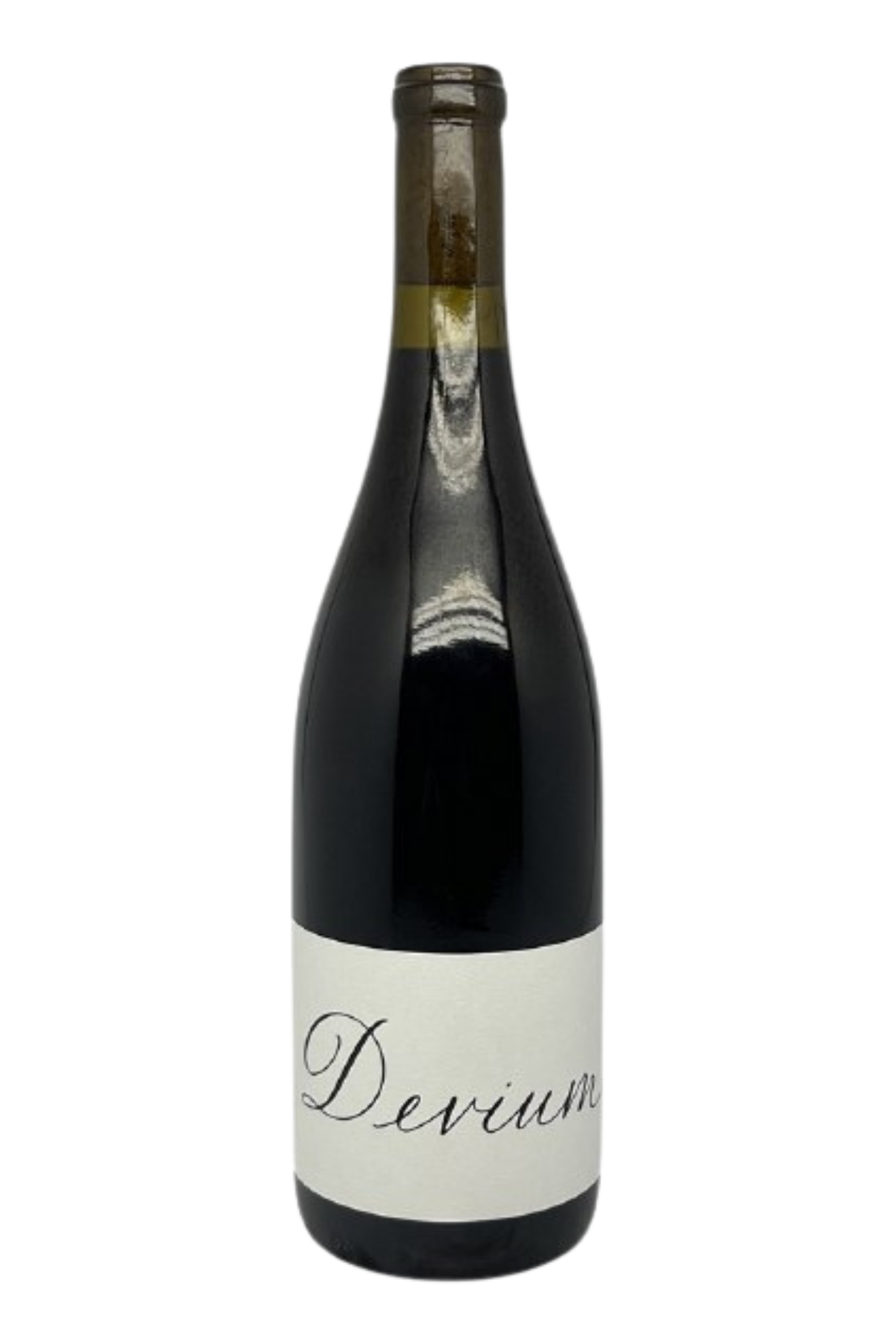
Devium Walla Walla Carbonic Red Wine 2024
The Vibe (from Devium): 68% Dolcetto, 32% Pinot Noir. The other primary casualty of the freeze was my Dolcetto at Dwelley Vineyard. In total, we only received .68 tons off of 2 full acres (as opposed to 7-8 tons in a normal vintage). But, much like the Pet Nat Rouge, the Pinot from Breezy ended up being our saving grace. Picked on the same day, the Dolcetto and the Pinot Noir were transferred together, whole bunch, into a tank and covered with CO2 for carbonic maceration. For two weeks we watched and smelled and made sure the CO2 was topped up as fermentation began. When I felt that the wine was ready, we unsealed the tank, let it air out a bit, then jumped in and foot tread all of the whole bunches to release as much of the juice as possible. The wine then spent another three days on the skins before being pressed to old barrels to finish fermenting. If necessity is indeed the mother of invention, I couldn’t have asked for a kindlier matron than the freeze. As much as the limited yields were painful, I was forced to further stretch my ideas and to break one of Devium’s core tenants: 100% single vineyard wine. Here we have a blend of two vineyards, both in the foothills of the Blue Mountains, and the sum of the parts is definitely an improvement over either raw ingredient. The Dolcetto brings the playfulness that last year’s vintage had in spades, while the Pinot introduces a bit more verve and thrust. I could drink this wine every day.
The winemaker: Keith Johnson takes an unconventional approach when it comes to Washington winemaking, working with higher elevation, north-facing vineyards and whole clusters in neutral oak to achieve fresh, low alcohol wines that are true to their terroir and an honest representation of the fruit. These are exciting wines because they eschew the norms of conventional Washington winemaking. They are true to themselves, while remaining balanced and pure. He now works with several vineyard sites, mostly high elevation, north-facing plots to allow long ripening seasons and fresh, low alcohol fruit.
